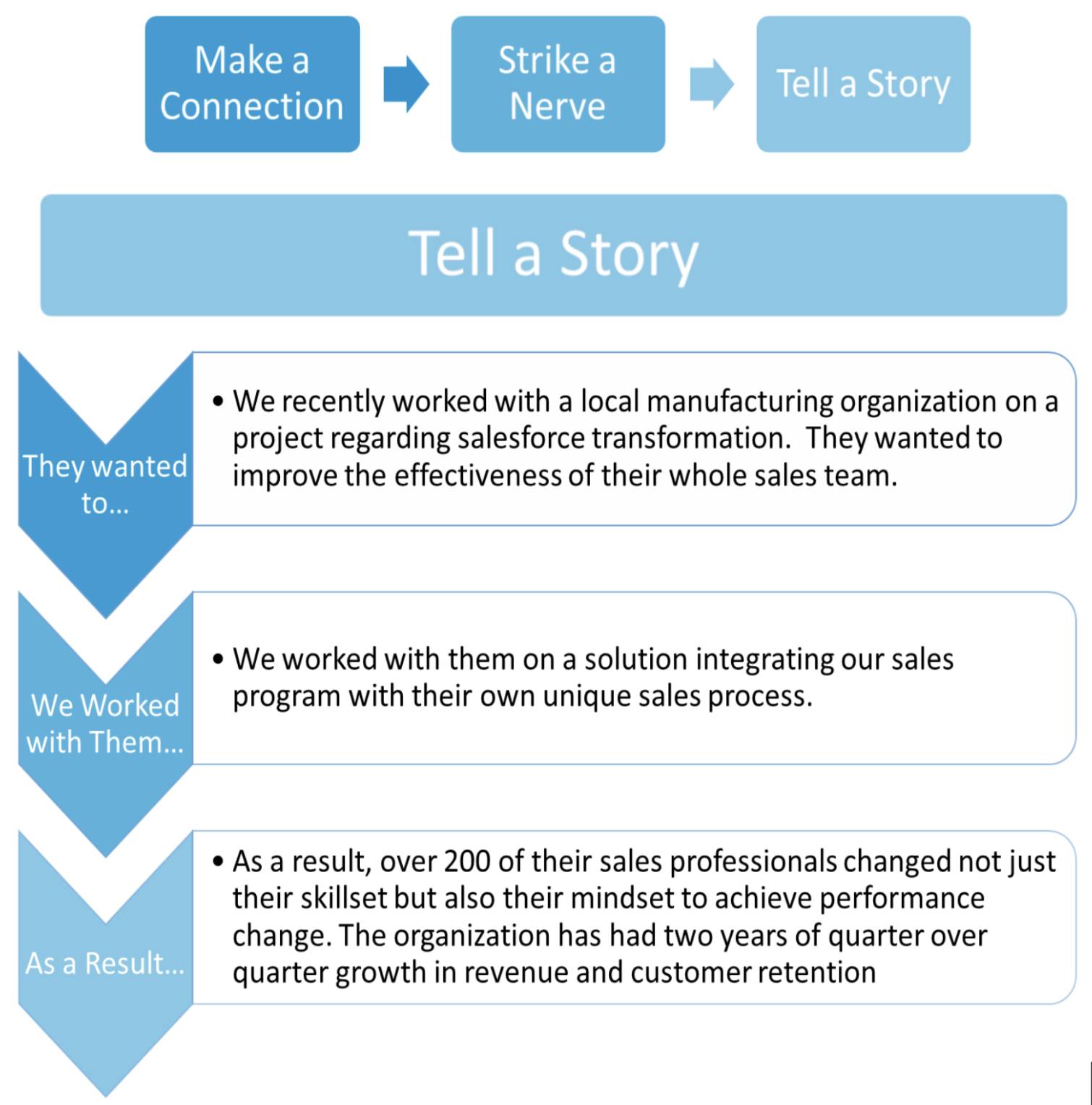Make a Connection
Learning Objectives
After completing this unit, you’ll be able to:
- Explain the difference between transactional and relationship selling.
- Develop a sales story when connecting with your customer.
Build a Connection Through Relationship Selling
When you lose sight of the relationship and just focus on making a sale, you can fall into what is called transactional selling. Let’s take a look at relationship selling versus transactional selling.
Relationship selling focuses on:
- Long-term results.
- Building trust.
- Offering insights.
- Creating value for the customer.
Transactional selling focuses on:
- Short-sighted, one-off deals.
- Making a sale.
- Product.
- Price.
Relationship selling goes deeper than just a one-off transaction. When you’re practicing relationship selling, you’re getting referrals, building a network of repeat customers, and garnering customer loyalty. For the relationship to be the focus of the sale, you must see from the customer’s perspective. As you go through this process, keep these things at the center of what you do.
Build a Connection Through Your Sales Story
Dale Carnegie’s Golden Book highlights Dale Carnegie’s timeless values and principles. Many of the principles serve as the foundation for relationship selling. Dale Carnegie connects these principles with each step of the sales process. The first step, Connect, is fueled by the principle: “Become genuinely interested in other people.”
What does it mean to be genuinely interested? How do you show genuine interest? You can do this in different ways. The first is through your sales story.
When a potential customer hears a real account of someone similar who benefitted from your company’s solutions, they’re likely to listen. You should have several success stories on hand that will enable you to choose the one that is most relevant to the specific individual you’re talking to.
Craft a Relevant Story
Share your customers' past successes in a quick and engaging way. Tell it in the form of a short story to capture their attention. In all cultures, storytelling has played a key role in the development of society. As people, we are especially attuned to information in the form of a story.
When telling the story, include the following elements.
- Incident: Describe the customer’s situation before implementing your solution.
- Action: What the customer did to solve the problem (using your solution).
- Benefit: Describe how your solution solved the problem and the value received by the customer.
At Dale Carnegie, this is known as the Magic Formula. In total, your story should take a minute or less to tell. Any longer than that and you risk losing your customer’s attention. You want your stories to be vivid, memorable, concise, and have a specific call to action.
Develop the Client Credibility Statement
Let’s look at a strategic approach to presenting your sales story—the Client Credibility Statement, which is made of three steps.
- Make a connection: This is when you either begin the conversation or casually steer the conversation toward a challenge or opportunity that your customer is facing.
- Strike a nerve: Get their attention by relating directly to their wants and needs, or cite an industry-related challenge that you know you can solve—but do not try to sell it just yet!
- Tell a story: This is your chance to build trust by describing how a similar client has benefitted.
 The credibility statement happens in the story. Here is the formula for creating one.
The credibility statement happens in the story. Here is the formula for creating one.
They wanted to…
We worked with them…
As a result…
This is how this whole story will sound.
| Client Credibility Statement Example | |
|---|---|
| Make a Connection |
"This is [XYZ] calling from Dale Carnegie Training. We help organizations build long-term business partnerships. We do this by turning your salespeople into consultants who build and sustain relationships. This makes the switching-cost to do business with a competitor too high.” |
| Strike a Nerve |
“We’ve found that salespeople who are tactical rather than strategic and simply sell products and services have to continuously reboot their pipeline rather than sustain relationships.” |
| Tell a Story |
Suggest you can help. “If this is an issue with your sales team, there is the potential that we can help your team transform.” Transition. “In order to know for sure, we would need to spend some time discussing where you are now and where you want to be.” |
Make sure that you’re speaking in a conversational tone. Avoid sounding scripted or rehearsed. And remember, this is when you focus on your understanding of the customer’s issues.
Additional points to remember.
- Avoid the pronoun "I".
- Tailor it to your client based on your pre-approach research.
- Talk about specific results, especially return on investment (ROI).
- Use direct, powerful language.
- Be careful with overusing it when it’s not welcome.
Try It for Yourself
In the Resource section, Dale Carnegie provides you with a Client Credibility Statement Worksheet you can use to practice developing your story. Once you’ve drafted your story, feel free to practice with a colleague or someone who can provide you feedback.
You will see how Connecting with your clients leads to collaboration in the next unit.
Resources
- Worksheet: Client Credibility Statement Worksheet
- EBook: Dale Carnegie’s Golden Book (form fill required)